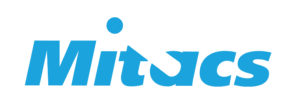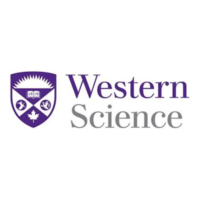Toolkit | Project
Post Secondary Institution – Department of Chemistry
Western Science: Toolkit Used to Develop a Sustainable Project Guideline
By: Luna Ghose, Sustainability Coordinator – Faculty of Science at Western University
August, 2015
Western University is one of the largest universities in Canada, with a total full-time enrollment of over 28,000 undergraduate and graduate students. To support this large student population, there are over 1,400 full-time faculty and 2,400 full-time staff working in the numerous departments and operational units on campus. Western is not unlike a large corporation making project implementation at the University complex. Responsibilities are divided amongst departments and units, as well as across levels of hierarchy, with approval required from various sources. To add to the complexity, different rules apply to different groups and depend on the type of project being implemented. Western university has made a commitment to the environment through the creation of the President’s Advisory Committee on Environment and Sustainability (PACES). PACES has outlined a number of goals for the University and its projects, that incorporate sustainability to help Western reach its targets. Implementation of the goals can be difficult as they require additional stakeholder engagement. With so many moving parts and different organizational silos, a process is required to streamline project implementation at Western in a way that compliments these sustainability goals. The Faculty of Science (Western Science) is working to become a sustainability leader on Western’s campus. In order to meet this goal, Western Science used the Sustainability Toolkit to develop a method to implement projects in the most sustainable method possible.
In 2013, the Department of Chemistry undertook a renovation project that provides a perfect case study to examine how projects are currently implemented at the University. The phase of the project to be completed in summer 2015 includes the replacement of fume hoods in three labs. The fume hood space in these labs is inadequate given new material safety data sheets (MSDS) safety standards, as more chemicals than ever before must be handled in a fume hood. To be in compliance with these changing requirements, more fume hood space is required. With the current fume hood technology, more fume hood space will require additional air flow within the building. The fume hoods being considered for this project could have features that will allow the equipment to use less air flow while still maintaining the required level of chemical containment. By reducing the amount of energy exiting the building via conditioned air, Western’s greenhouse gas emissions and carbon footprint can be decreased. The reduction in energy use and greenhouse gas emissions is in line with the PACES’ goal to “reduce campus-wide energy usage intensity, overall energy usage, greenhouse gas emissions and water usage intensity.” Using the Chemistry department fume hood project as an example and the Sustainability Toolkit’s process-based approach to sustainability implementation, a sustainable project guideline has been developed for use across Western’s campus.
The increased safety and energy savings that will result from the implementation of the project relate to specific metrics within the Toolkit’s four Sustainability Criteria. Determining material metrics during the design phase allows for the individuals implementing the project to focus on the areas of sustainability related to the project and can help identify stakeholders that need to be involved. As mentioned previously, there are a number of individuals and groups at the University that must be involved in order to implement a project sustainably. The guidance document developed using the Toolkit, directs users to the exact departments and individuals to reach out to for assistance. Identifying stakeholders is the first step in the Toolkit, and demonstrates the importance of communication and information sharing between the many groups early in the process so as to ensure stakeholder buy-in and also determine what each group will contribute.
Through the use of the Toolkit and its push to identify stakeholders early in the process, it became evident that a business case would be beneficial to drive the sustainable aspects of the new equipment. Conditioning and moving air can cost $5-8 per cubic foot per year; by reducing the amount of conditioned air leaving the building, the new fume hoods could save money for the University while saving energy and reducing greenhouse gas emissions. Building a business case to be presented to upper management will better the chances of these fume hoods being implemented campus-wide as many large-scale decisions at the University come from higher up. The Toolkit also illustrates how the departments and operational units are connected, which allows for the user to better build their business case with input from all of the stakeholders involved.
As stakeholders and priorities are identified and documented, the Toolkit becomes a centralized location to refer to for future projects. In addition to stakeholders, current policies and procedures are required in the Toolkit as well as benchmarks and baselines amongst other important data. This data was gathered through conversations with various stakeholders, with each stakeholder bringing a different piece of sustainability to the project. With all of this information in one central area, the Toolkit served as the main process by which the sustainable project guideline document was developed. It made it easy to refer back to information gathered, next steps, and determined who was responsible for each action.
Finally, the Toolkit has a step dedicated to informing the supply chain of the sustainable components being implemented and encourages the use of life-cycle thinking within sustainability implementation. The main merits of using the Toolkit were that it helped in identifying stakeholders, developing a business case, creating a centralized location for sustainability data, and examining the product life cycle. There are areas where the Toolkit needs to be tailored to fit the needs of a project, but overall it is clear that the Toolkit provided a good starting point and framework to bring sustainability into Western University.
 The research for this case study was funded with the support of a Mitacs Accelerate grant. For more information on the research project, please view our blog and white paper.
The research for this case study was funded with the support of a Mitacs Accelerate grant. For more information on the research project, please view our blog and white paper.


